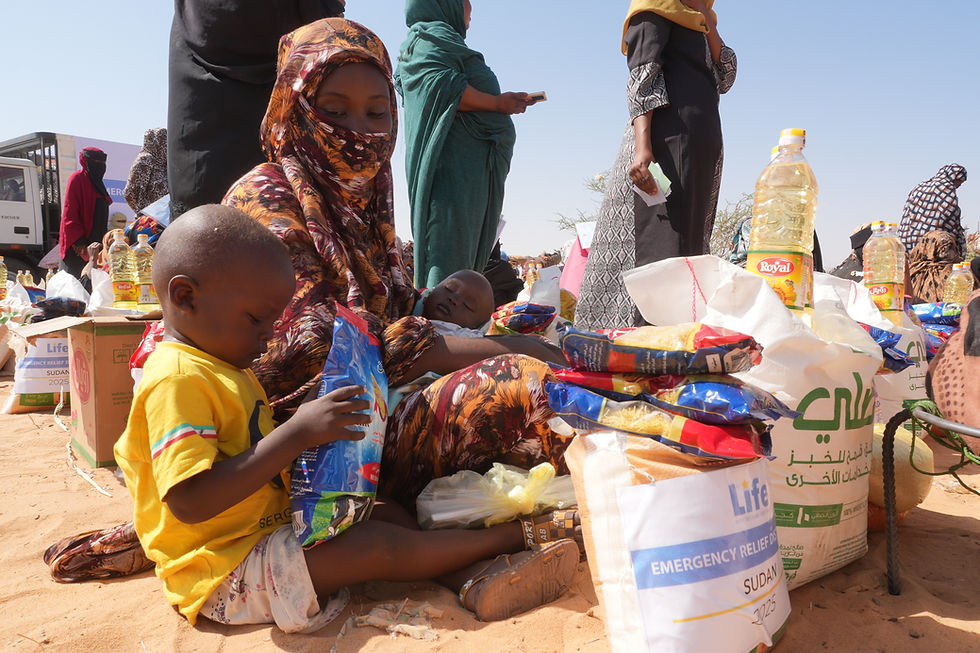The Next Big Thing in Humanitarian Aid: Technology
- Life USA
- Mar 3, 2023
- 3 min read
Updated: Mar 9, 2023

In an age where technology is accelerating at an unprecedented rate, it is no wonder that it is becoming an integral part of our lives. Technological advancements move our lives remarkably, from Facebook’s virtual reality, Metaverse, to the most recent highly proficient artificial intelligence.
Humanitarian aid organizations are increasingly leveraging technology to improve their delivery of essential aid, and this trend is only increasing. 3D printing, drones, and artificial intelligence (AI) are just some of the technologies that are helping organizations track aid distribution, assess needs, and respond to emergencies more effectively than ever before. This post will explore how technology is the next big thing in humanitarian aid.

3D Printing
3D printing is a revolutionary process that involves the creation of three-dimensional objects by adding layers of material on top of each other based on a digital design. This cutting-edge technology uses a 3D printer to read a digital file and then build an object from successive layers of material, such as plastic or metal. With its versatility and ability to produce intricate and complex shapes, 3D printing has shown promise for various applications in industries such as manufacturing, medicine, architecture, and engineering.
In the humanitarian sector, 3D printing is being explored to quickly produce low-cost and customized aid materials, such as prosthetic limbs, shelters, and water filters, to help improve the lives of people affected by disasters or conflicts. If the area in need has access to or can assemble a 3D printer, they can build many life-changing items they may otherwise not have access to.

Drones
Drones are also known as unmanned aerial vehicles (UAVs). They are robot-like flying machines that do not require a pilot onboard. They can be maneuvered from the ground and carry out various tasks. They can rescue people at sea or drop off a package at your doorstep - and almost everything in between.
In humanitarian aid efforts, drones can be used to transport essential supplies, such as medicine, food, and water, to areas that are difficult to access due to natural disasters or conflicts. Drones can also assess the damage caused by natural disasters or conflicts, which can help humanitarian organizations prioritize their response efforts.

Artificial Intelligence (AI)
Artificial intelligence is a broad area of computer science that makes machines seem to have human intelligence. AI is created to function independently of humans to serve human life and make it easier. AI has reached a point where it has surpassed the human brain’s ability to store and access information. However, the concept of human consciousness has yet to be replicated in machines.
Artificial intelligence is another technology that is transforming the humanitarian aid sector. AI can be used to analyze data and identify patterns to help humanitarian organizations better understand the needs of the people they are trying to help. This can help organizations tailor their aid efforts to meet the specific needs of the communities they serve. Additionally, AI can be used to predict and prepare for disasters, which can help save lives and minimize damage.
Final Thoughts
Overall, the use of technology in humanitarian endeavors has the potential to transform the sector. These technologies can improve transparency, accountability, and efficiency, ultimately leading to more effective aid delivery. While there are still challenges to overcome, such as ensuring that technology is accessible to all communities, the reliability of machines, availability of a power source, and high initial costs, the benefits are clear. As we progress, we expect to see more humanitarian organizations use technology to improve their aid efforts and better serve those in need.
Sources:
UNHCR. “UNHCR uses drones to help displaced populations in Africa.” 15 November 2016, https://www.unhcr.org/news/latest/2016/11/582dc6d24/unhcr-uses-drones-help-displaced-populations-africa.html. Accessed 2 March 2023.
Schneider, Susan. "The Ethics of Artificial Consciousness." Scientific American, 8 July 2019, https://www.scientificamerican.com/article/the-ethics-of-artificial-consciousness/.
TechTarget. “What is a drone?” IoT Agenda. n.d., https://internetofthingsagenda.techtarget.com/definition/drone. Accessed 3 March 2023.
“AI in the Humanitarian Sector.” ReliefWeb, 10 October 2019, https://reliefweb.int/report/world/ai-humanitarian-sector.
Marr, Bernard. "What Can 3D Printing Be Used For? Here Are 10 Amazing Examples." Forbes, 24 July 2020, https://www.forbes.com/sites/bernardmarr/2020/07/24/what-can-3d-printing-be-used-for-here-are-10-amazing-examples/?sh=7252bfa14d69.



